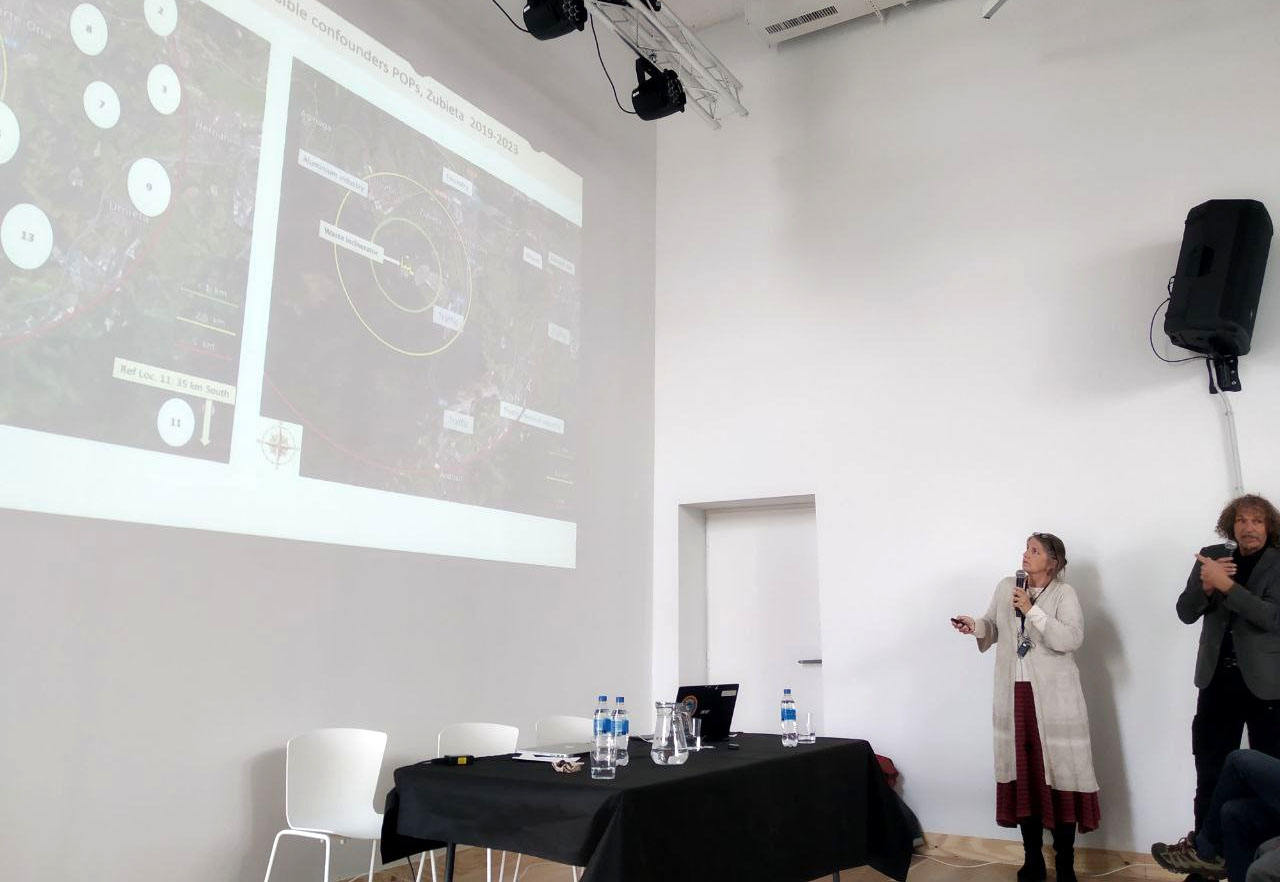Large quantities of dioxins have been measured in populations close to the Zubieta incinerator
- Toxicowatch has taken samples for five years in eggs from chickens, moss, trees, sediments and breast milk in the incinerator environment. Dioxin levels have increased considerably since 2019, including heavy metals, PFAS and other highly polluting substances. On Thursday, the first presentation of the study was made in Hernani.

In the bridges and neighbouring villages there has been a sharp increase in toxic substances since the incinerator was set up. This is what the Dutch foundation Toxicowatch has deduced after five years of sampling. The first presentation of his research in the Sandiusterri room in Hernani was made on Thursday and was attended by Abel Arbenkout and Kirsten Bouma of the entity, invited by the Anti-Incineration Movement.
The quantities of dioxins have increased considerably in samples taken in 2022 and 2023, compared to 2019, when the incinerator was fully launched in 2020. The eggs of chickens from 15 places and farmhouses have been biomonitored in Zubieta, Lasarte, Usurbil, Andoain, Hernani and Urnieta, and in some cases the increase in different types of dioxins has been very important. For example, in a Hernani farmhouse, dioxins have been measured six times more.

Samples have also been taken in moss, pines, argoma and acebo, with similar results, with a considerable increase. In the case of moss, in 2019 the number of dioxins and furans has increased from 0.13 to 29.38, "226 times more".
"Eternal" pollutants also
The quantities of toxins found by Toxicowatch in the vicinity of Zubieta are "very worrying," explains the Anti-Burning Movement
On the other hand, "in 2023 increased levels of heavy metals have been found in water and sediment," explains Arbenkout and Bouman. As for breast milk, since 2019 they have been unable to take further samples and have announced that they will continue to investigate next year.
The quantities of toxins found by Toxicowatch in the vicinity of Zubieta are "very worrying," explains the Anti-Burning Movement.
Comparison with other incinerators
The Foundation investigates other European incinerators such as Beringen in Belgium, Valdemingez in Madrid and Pilzán in the Czech Republic. In all of them, the limit of 3.3 pg or peak grams of dioxins in the European Union is broadly exceeded five or six times. But in the most recent case of the Zubieta incinerator, the graph of a measurement made in Hernani in 2023 is striking: 35 pg of chickens’ eggs, ten times the EU’s equivalent legal limit.
In the case of the Zubieta incinerator, the graph of a measurement made in Hernani in 2023 is noteworthy: 35 pg of chickens’ eggs, ten times the EU equivalent legal limit.
Arbenkout and Bouman, at the beginning of the talk, remember the damage that these pollutants can cause, such as cancer, diabetes, dermatological diseases... They explain that being bioaccumulative they accumulate in the food chain and in the environment and that their effect is increasing.
Hernani is the first in Toxicowatch presentations. Next Monday they will be in Usurbil and that same day they will also present the study at the General Meetings of Gipuzkoa, invited by EH Bildu and Elkarrekin Gipuzkoa.








.jpg)













